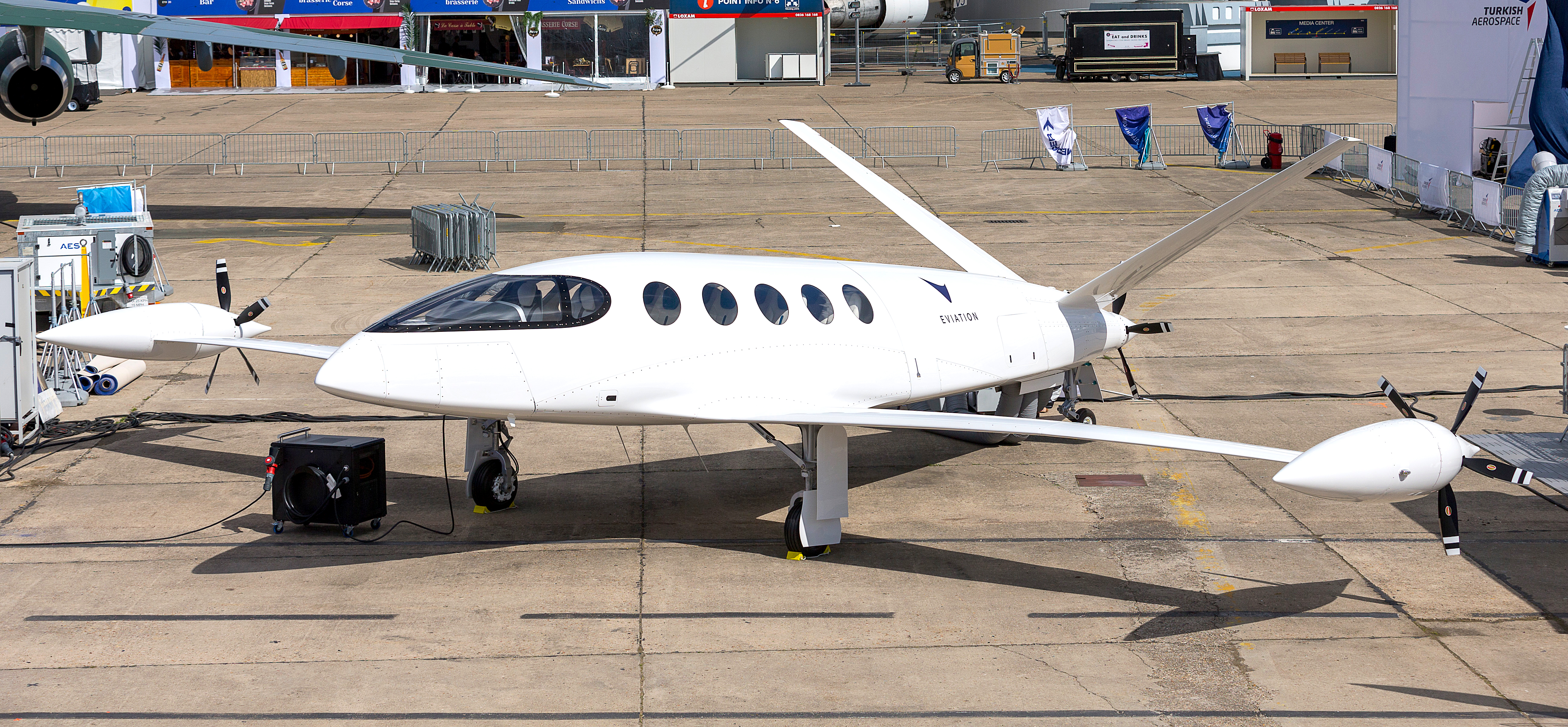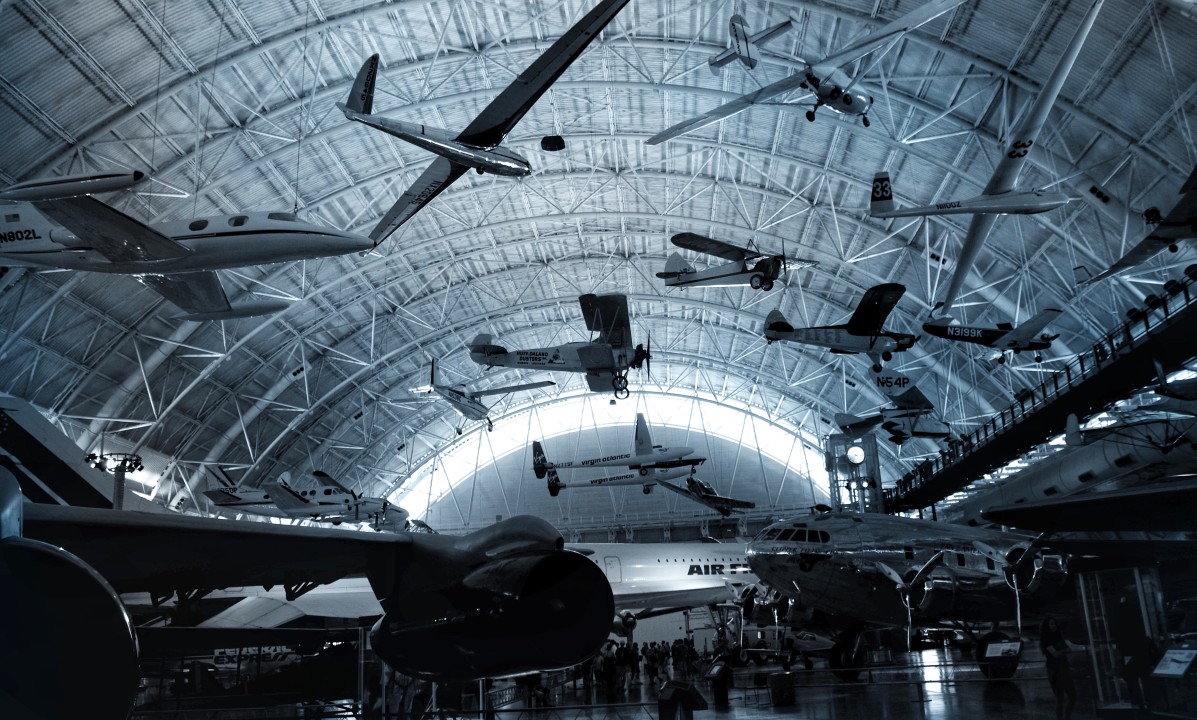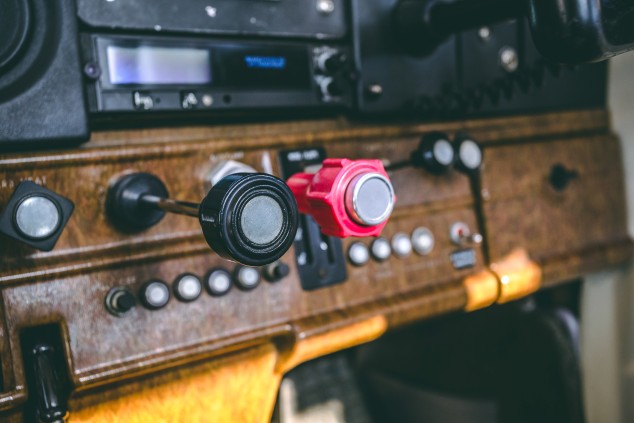Technological Advancements Shaping the Future of Aviation

It is clear that over the past 10 years the technological developments within aviation have been shaping and changing the overall landscape of aviation. It is also clear that while the aviation industry is not known for its ready adoption of any and all technology that it’s presented with, it is making tremendous strides to adopt many of these new technological advances. One of the major challenges with The aviation industry with regards to the adoption of new technology, is that with regards to safety it is highly regulated by the federal aviation administration. This is more pronounced at the airline level. Therefore, at the Part 91 level where regulations for safety are not stringent we see the adoption of new technologies being more pronounced. However, the overall industry itself is not one that is readily accepting of technology. In our article, ‘Single-Pilot Operations In The Airlines’ we discussed this very point.
In this article we take a look at some of the major technological advances in the aviation industry, highlighting some of the implications of those technological advances, and try to make a calculated estimate as to where the aviation industry will be in the future given the pace of these technological advances. It is important to note that we are not trying to be predictive in this article. Instead, we look at the trends over the past 10 years and project forward to give a sense as to what the future of industry might look like.
Key Takeaways
- New technologies are going to prospectively change the future of aviation for the better. Exciting new developments have been underway and are starting to be showcased.
- Many new developments focus on decreasing emissions and increasing overall efficiency within aviation businesses.
- Advancements in technology benefit all segments of the aviation industry, some areas see the benefits faster than others.
Recent advancements
It’s necessary to highlight the most profound developments within the industry in the recent scope of things. Given the set-backs that the pandemic brought about, it’s amazing to see that the drive for more effective and efficient technologies has still been a great focus for aviation. Below are some examples of such.
All-electric Aircraft (for passenger and training purposes): According to AFAR Magazine, An estimated 200 global companies have their hands in electric aircraft projects, several have already made small but successful test flights. Smaller two- to four-person electric planes for commercial and private service are already on the move, with the first-generation technology backed by industry leaders such as Boeing, Airbus, NASA, and Toyota. Currently, the largest electric plane in the works is Wright Electric’s 186-seat Wright 1, which intends to operate as soon as 2030. Wright also announced plans for its 100-passenger Wright Spirit, which will retrofit BAE 146 planes (from British aerospace company BAE Systems) with electric batteries. AFAR also mentions that battery technology being installed into already functioning aircraft can be a significantly quicker path through certification than starting from scratch. Hybrid-electric technology, a use of batteries and traditional jet fuel engines, is another advancement in reaching towards electric aircraft, companies like California-based startup Ampaire and France’s VoltAero are already developing hybrid planes.
Sustainable aviation fuel (SAF): Office of Energy Efficiency & Renewable Energy provides detailed information about how Sustainable aviation fuel (SAF) has been a priority development for the aviation industry to help lower emissions and along with electrical aircraft. SAF is a biofuel used to power aircraft that has similar properties to conventional jet fuel, just with a smaller carbon emissions. Sustainable aviation fuel has been able to be produced using feedstock with the use of technology to convert stock into energy that can be used by aircrafts. from such. SAF can dramatically reduce greenhouse gas emissions, when compared to conventional jet fuel. Some emerging SAF pathways even have a net-negative carbon emission. An estimated 1 billion dry tons of biomass can be collected sustainably each year in the U.S, which can be enough to produce 50–60 billion gallons of low-carbon biofuels! Some livestock that has been able to be utilized to produce SAF include Corn grain, algae,wood mill waste, and agricultural residues.
Advances in digital flight bags: National Business Aviation Association (NBAA) helps our understanding of another important development that is continuing to improve is through the use of digital and electronic flight bags. An Electronic Flight Bag (EFB) is a device that hosts applications for flight crews to perform a variety of functions that were traditionally accomplished by using paper and pen. Advances and the creation of EFBs has led to pilots being better able to perform basic flight planning calculations and display a variety of digital documentation; operations manuals, navigational charts, and aircraft checklists. The most advanced EFBs are fully certified as part of the aircraft avionics system and are integrated with aircraft systems such as the FMS. These advanced systems are also able to display an aircraft’s position on navigational charts, depict real-time weather, and perform many complex flight-planning tasks. Yes, some pilots are using an Apple iPad or other Tablet Device in Part 91 Operations. Bringing the dynamic fuel efficiency data and operational procedures into the flight deck through electronic flight bags can also decrease costly flight delays by providing pilots and/or flight controllers real-time options around weather, traffic, and ground congestion at the destination airport.
Small unmanned aerial vehicle (SUAV) drones: Small Unmanned Aerial Vehicles (SUAVs) have the potential to change the economy for consumers and businesses in the aviation industry. SUAVs are already present in aiding in precision agriculture, delivery, assistance to first responders, and for safety inspections of critical infrastructure. UAVs are utilized in numerous occurrences due to their advancement in safety. Drone Technology is advancing through them being employed in the military during high-risk activities.. Their features allow them to obtain real-time data to create and preserve a safe environment. Another reason that drones are proving to be a noteworthy development is because their prices are more pocket-friendly, even on a consumer level. Along with this information, Equinox’s Drones, even mentions that UAVs can take excellent Aerial Photographs, aerial videos and accumulate large volumes of accurate data. The data obtained is transformed into detailed 3D Maps and 3D Models for a complete analysis.
Electrical Aerial Ridesharing: Electric aircraft are becoming more common and can now even be used as ridesharing to travel around cities, much like Uber. These aircrafts are known as Electric Vertical Takeoff and Landing (eVTOL) vehicles. Joby Aviation is a leader in this segment. Joby is a Californian venture-backed aerospace company, tha has developed electric aircraft that operate as an ‘air-taxi’ service. headquartered in Santa Cruz, California. Electrical aircraft ridesharing can provide a green solution to driving that can be made efficient. Some benefits to using electrical aircraft ridesharing are that they often maintain zero carbon emissions, only require one pilot, have a 150 mile range, and a 200 mph top speed. It is also worth noting that United, American Airlines, Virgin Atlantic, and Japan Airlines are among a growing number of airlines that have eVTOL orders on the books, with plans to debut a new kind of air taxi service as soon as 2024.
Why are these advancements in demand?
It’s no surprise that there has been an increase called, internally and externally, for greater efficiency and effective means of air travel and conducting operations. Improvements and advancements are more in demand as of recent times, some reasons are below:
Need to reach Net-Zero: An article by Reuters, goes into detail of how the U.S set a goal to achieve net-zero greenhouse gas emissions from the aviation sector by 2050. The White House said it was targeting 20% lower aviation emissions by 2030. At the climate talks in Glasgow, the United States, as a coalition of countries, announced the “International Aviation Climate Ambition Declaration,”. That declaration, according to a draft seen by Reuters, acknowledges that the United Nations’ International Civil Aviation Organization (ICAO) is the appropriate forum for addressing emissions from international aviation and includes commitments to push ICAO to adopt an “ambitious long-term aspirational goal” and support SAF development. The U.S. goal of net-zero GHG emissions by 2050 is supported by an analysis by the FAA. Recently, Airlines for America, an industry trade group representing Delta Air Lines (DAL.N), United Airlines , American Airlines (AAL.O) and others, committed to working with the government to achieve net-zero carbon emissions by 2050.
Need for better efficiency: Following the unfortunate outcomes following the pandemic and the ones that were present leading up to it, it is evident that the aviation industry needs to be at the better helm of efficiency. Some sectors can benefit more than others, specifically those that operate on larger scales, such as commercial airlines. Profit margins have not been the most positive prospect in recent years for these sectors and these businesses are having to look to improve their own efficiency to stay afloat while still recovering from COVID related setbacks, but are now coupled with a foreseen inflationary economic environment. More on this topic can be found in our article ‘Why are Margins so low in the Airline Industry?’.
Private charter sector investing more: The private charter sector has seen a massive economic boom in recent times, even during the pandemic, and is continuing to rise. As affluent and/or business travelers and corporate executives sought to stay safe during the pandemic they started leaning towards using private flights more while there was a virtual shut-down of the airline industry. The appeal for private travel is clear, there are many reasons that business travelers are starting to prefer private charter flights instead of public airlines. Private travelers and those working within the private charter segments are creating an increased demand for aircraft that can be used efficiently, environmentally, and safely. More about how the private charter segments are seeing an increase can be read in our article ‘Air Travel: A Shift From ’Public’ to Private?’
What does this mean for aviation businesses?
Aviation businesses are eager to learn about these new advancements and how they may be able to implement them within their realms. Improving efficiency is a key benefit that every area of aviation is seeking out. Some aviation businesses are able to greatly benefit from these new developments, what this means for them is discussed below:
Lowered emissions and improved efficiency: Aviation businesses are going to see positive effects that are associated from using and implementing these new technological developments. The private charter segments specifically have the ability to benefit from new advancements that are aimed at lower emissions. The use of electric aircraft, which can only typically fit 4-6 people max, is going to give greater access to those wishing to use private flights in opposition to commercial airlines. While the airline segment is set-back a bit further from pandemic related concerns, some of those that are able to fly privately are making that shift permanently. Lowered emissions would give the ability for aviation businesses to operate more efficiently and use those cost saving matters.
Change in operations: Although these changes are exciting and do pose as good news for the aviation industry, it does mean that there is a new field of knowledge to obtain and that a change in operations and infrastructure will likely also happen when new advancements come about. Pilots need to get new certifications to fly all electric aircraft, or go through different training as they may operata slightly differently than traditional aircraft. Aviation businesses would also likely change internally as the use of these new technologies will need different procedures and ways of operating and maintaining these new developments and areas of technology. For instance, instead of stocking up on fuel, aviation businesses in the future will need to stock up on ‘batteries’ and be optimal and efficient with their charging capabilities.
Possible flight boom: While these new developments are coming into fruition and are becoming easier to access for aviation businesses, this may lead to a possible flight boom as operations become more efficient. If electrical aircrafts, SAFs, and other new advancements can aid in helping businesses improve operational efficiencies and lower cost, those who already fly privately may start to do so even more, considering if the paying customer find it not only economical but also derive value from this being environmentally friendly as well. Especially if there comes a time when commercial airlines are also able to use electric aircraft to carry a large seating capacity that would undoubtedly cause an increase in demand for flights, given that the argument in this section holds true.
What does this mean for Flight schools?
Flight schools, similar to the private charter segments, are seeing their own outcomes from the pandemic. They have been fortunate to be on the benefiting side of the pilot shortage, and the beneficiary of the increased need for pilots in the private sector. These new developments in recent times give flight schools a better means to operate.
Training made easier and more efficient: One of the most fundamental ways that improvements within the aviation industry will greatly aid flight school is with online tools and advanced technologies. One of the many ways that flight schools are taking advantage of this environment is by implementing new strategies to help make training easier, as they are seeing an increase in demand following the pilot shortage. When you are using new technological developments that are meant to make operations and training easier by saving pilots time, money, and effort to find the right instructors that will work with them, their schedule, and plan, the training process is so much easier. So much is wasted when pilots spend an unnecessary amount of time finding the right instructor and training plan. For one, when pilots are seeking training, it is a very time consuming effort to even start the training itself. With great online tools to save pilots, time, money, and effort, they are better able to deal with the higher cost of training.
Boom in new pilots: Unlike the airlines, flight training institutions have more opportunity to bounce back and flourish from setbacks related to the pandemic. Individuals try to take advantage of what they believe are opportunities to become commercial or airline pilots. This has led many flight schools to see an increase in the number of student pilots. This is further amplified by the practice of the regional airlines to offer signing bonuses to attract new pilots.Some pilot training institutions will increase their capacity such as increasing resources such as aircraft and facilities to meet the Increased demand for pilot training. More information about this topic can be found in our article ‘The Pilot Shortage – A Challenge for Airlines, Possible Boom for Flight Schools.’.
New entrants into the market: Since the barrier to entry in the pilot training space is very low, there will be new entrants into the space to provide pilot training. One corollary to this is the entrance of individual flight instructors entering the market space to take advantage of the increase in demand for pilot training. Individual flight instructors these days are very adept at using online/mobile solutions to help them become as close as efficient as a full-fledged flight school.
What does this mean for Pilots?
Of course pilots are going to be the ones that interact directly with these new technological developments and software. These new advances are typically meant to aid in their process of flying and make that easier. Pilots are typically looking forward to new developments as it means greater efficiency for them.
Increased demand: The pilot shortage has brought about a new flight instructor demand that flight schools have not readily seen before. Unfortunately, inflation is creating an environment for flight schools to not be able to fully capitalize on the instructor demand as they are having to put money in other places instead of hiring instructors and more staff. This means that instructors may not going to be hired at such an excessive rate that students will come in, so schools are going to have to pay the instructors they do have more as another run-off of inflation that can be put on pilot training.More information about this topic can be read in our article ‘Inflation: Rising prices and its effects on pilots and their training’.
Updated specialized training: As mentioned above, when new technological developments arise they are typically good for efficiency and for reducing emissions, however, there is the need for pilots to learn about how to use the new equipment or aircraft functions that come with these changes. Specialized training may be required to be able to use some of the new advances such as electrical aircraft, digital flight bags, new operating procedures, and other technological developments. These changes are overall good for pilots in the long-run, but there will be a gradual change in what pilots are going to need to know in order to take advantage of the new prospects that come with the developments in the industry.
Improved aircraft performance: New developments and advancements in the aviation industry are able to make aircraft perform better and make them easier to fly. For instance, many SAFs contain fewer aromatic components, which enables them to burn cleaner in aircraft engines. This means lower local emissions of harmful compounds around airports during take-off and landing. Aromatic components are also precursors to contrails, which can exacerbate the impacts of climate change.Another example is with digital flight bags, using these instead of traditional pen and paper give pilots the opportunity to improve their aircraft performance and travel time.
What does this mean for air travelers?
Air travel may not see the new developments in aviation first-hand for a bit more time than the rest of the industry. However, consumers are still excited for new prospects of flying in the future and what that can mean for them.
Better ability to travel short distances: On a consumer level, one of the most exciting prospects to these new developments is the use of ridesharing via electric aircraft, and the developments of small fully electric aircraft for private charter segments and such. One of the main reasons that these are being appealed to by air travelers is that it gives them an increased ability to travel short distances in a much shorter time than it would in a car. For instance, a visual by Joby Aviation shows how a 45 minute car ride in NYC can be reduced to a mere 7 minutes with their electrical aircraft ridesharing services. The ability to avoid traffic and travel across cities at a much faster rate that is efficient and environmentally friendly is going to be a huge prospect for air travelers in regards to these new developments.
Increased use in private charter segment: Along with the increased ability to travel short distances with ridesharing services, some smaller (4-6 seat) aircraft have been in development for use in the private charter or personal flying segments of the aviation industry. Private aircraft are typically already of this size so the fact that new electrical or hybrid aircraft that are now functioning put the private charter segment in a good position for when these new aircraft become more used and trusted by air travelers. Airlines will likely need many more years of development to be able to fully develop and use all-electric aircraft intended for large-scale commercial airline use. This also means that private charter segments are going to be more in demand by people seeking to use more environmentally friendly means of travel and for those who can afford such.
Exciting prospects for all parts of the Industry
All of these new developments in technology and efficiency, especially in terms of reducing carbon emissions, are exciting and give all areas of the aviation industry something to look out for that will provide a better way of functioning. This is especially important given the challenges faced in recent years that have needed their own special responses and courses of action. These new technologies and developments provide hope for airlines, flight schools, pilots, and consumers alike.
It is often easy to recognize the ways that the industry may need to improve or highlight the negative impacts that have had to be overcome in recent years. However, it is equally important to consider the better notions that are being brought about from the resilience and strength of pilots and the industry as a whole.
——————————————
Thank you for reading this week’s On Aviation™ full article. How do you think these new developments in the industry are going to affect businesses and pilots? Please share your thoughts in the comments below and remember to continue the conversation on our Twitter and Instagram.
Orlando – On Aviation™




